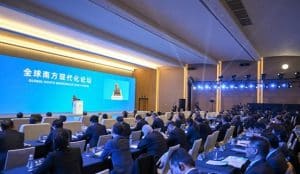The “Blue Pioneer” program is a capacity building project initiative designed for local marine NGO practitioners in China. The 2024 Blue Pioneer class was formed at the beginning of this year, comprising over 30 students from various NGOs across China. In early August, these students visited Tatou Liu Village in Jinjiang City, Fujian province.

The harmonious coexistence of humans and nature is tied to an understanding and respect for local culture. One of the best ways to appreciate a place’s culture is to experience it firsthand – by walking its paths, observing its surroundings, and engaging with its community.
During their visit, the students toured fishermen’s homes, kelp and oyster farmers and local factories. They learned about the economic transformation of fishing villages, listened to the curator’s enthusiastic introduction at the Rural Memory Museum, and across the Memory Bridge of Tatou Liu.
The highlight of the trip was the opportunity to observe the Chinese white dolphins up close.

Locally, white dolphins have long been regarded as the incarnation of the sea goddess. The harbour near Tatou Liu Village is home to dozens of white dolphins. However, due to overfishing, the local fishery resources have gradually dwindled, leading to the dolphins disappearance for decades. In the past two years, thanks to the Chinese government’s Summer Fishing Ban, fishery resources have been recovering, allowing the dolphins to return back.
Additionally, the advice and first-hand research data contributed by many Chinese NGOs and private research institutions have played a crucial role in shaping China’s summer fishing ban policy.
Another significant threat to the white dolphins and local ecology comes from land reclamation projects driven by population growth and urbanization, including the construction of a port city and an offshore airport.
Grassroots NGOs have been instrumental in prompting the central government to enact restrictive policies on land reclamation currently, with the exception of the airport, all other reclamation projects have been halted.
Moreover, the design of the airport is undergoing a meticulous environmental assessment. Local NGOs continue to advocate tirelessly, as the impact of frequent flight take-offs and landing on the white dolphins remains uncertain.



